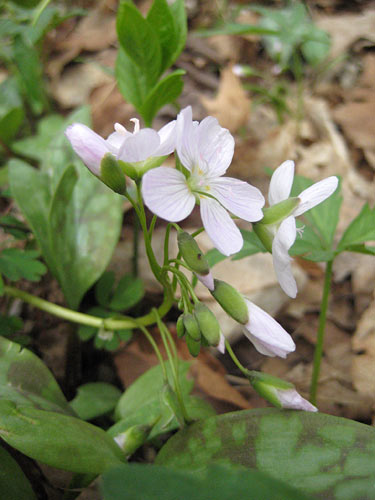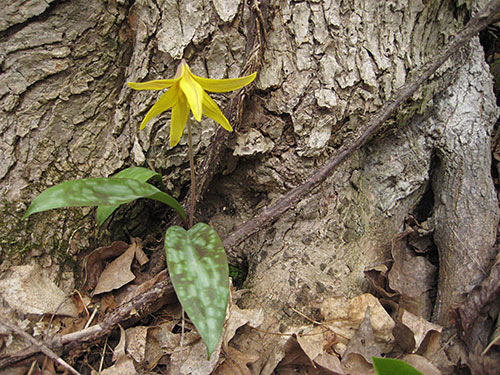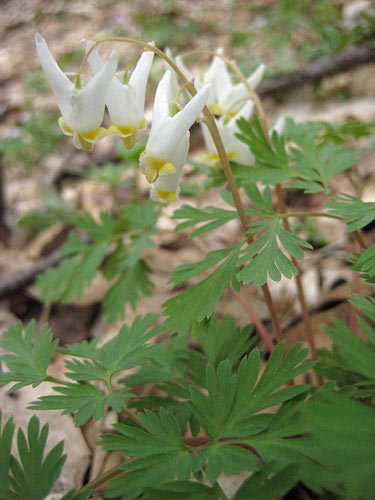Last year when my gardening friend Mrs. R sent me an email reading “I’m thinking about going on a garlic mustard pull. Want to go with?,” I wasn’t quite sure what she was talking about. Perhaps a new type of line dance? A type of Italian cooking class? She knows I’m not fond of cooking. I soon learned it was an organized effort to put a dent in the garlic mustard population in our woodlands. This year was my second year attending a pull hosted at the Blanford Nature Center.
Garlic mustard (Alliaria petiolata) is an invasive plant brought over from Europe for supposed medicinal benefits and use in cooking. The biennial (two year life cycle) took off and quickly began taking over the woodland floor. The plants often get a head start in Spring and grow very rapidly which shades out native woodland plants. When an invasive species begins mucking up the order of things, the entire ecosystem gets thrown out of whack.
As you can see below, the first year plants are kinda pleasant looking, almost resembling woodland violets in the appearance of the foliage. In fact, if not for the darker and slightly hairier stems on the garlic mustard plant, I’m sure a lot more violets would suffer friendly fire during these pulls.
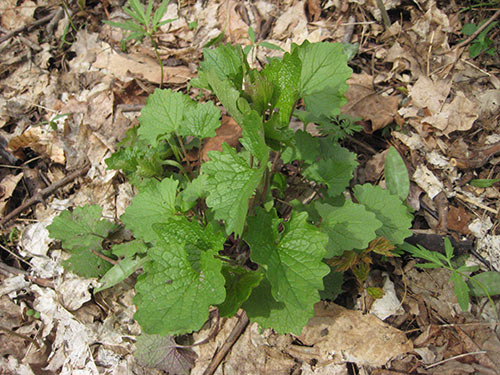
Kinda cute, aren’t they? However, add water and another growing season and you end up with a lanky, white-topped, saw-toothed invasive that is hell-bent on reproducing and wreaking havoc. Remind you of anything?
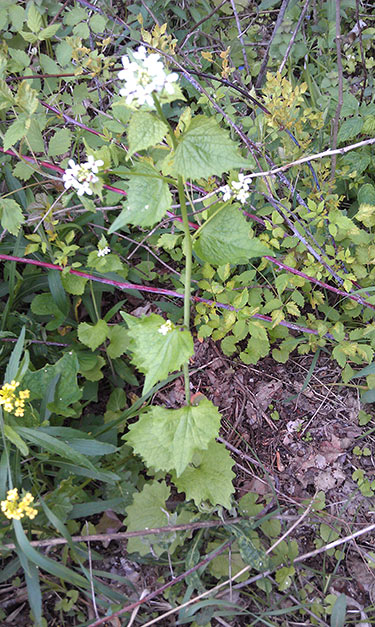
These second year plants trade in their pleasantly scalloped edged leaves for saw-like edges. The plant grows a stalk with white blooms which dry and send seed capsules out to take over the forest. This self-seeding is profuse and the resulting seedlings often take over huge areas of the woodland floor.
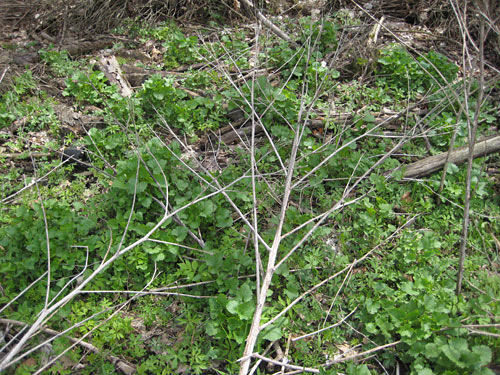
During the garlic mustard pull, the nature center employee armed us with knowledge and garbage bags to dispose of the plants. The softened ground from the recent rainfall made pulling the plants easier. Otherwise they have a habit of snapping off near the ground if you do not get a firm hold near the plant’s base. The pulled plants are often burned since seed capsules can withstand mild amounts of heat, such as temperatures created by a compost pile.
Many communities are organizing group garlic-mustard pulls so if you are in an area affected by the plant, check with your local nature center or extensions office. Here in Zone 5b we have such beautiful woodland wildflowers, it would be a shame to see them snuffed out by garlic mustard. Here are just a few I was able to enjoy.
